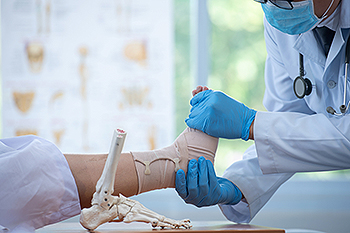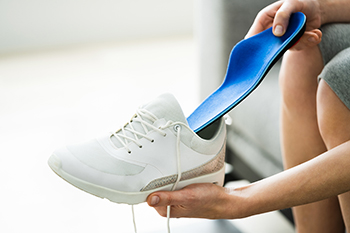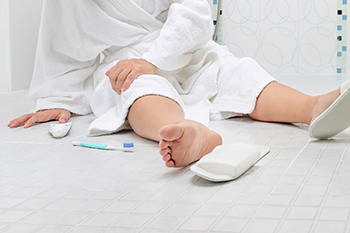When you stand on the ground, do you notice small, soft bumps on the bottoms of your feet? Do they disappear when you sit down? If so, you may have piezogenic pedal papules. These tiny bumps are round, squishy, and skin-colored and tend to occur around the heels. They are caused by fat below the skin poking through connective tissue defects in the feet. Piezogenic pedal papules are very common, affecting approximately 60% of adults. In the majority of cases, these papules cause no symptoms. In about 10% of people, papules may cause foot pain, which can be treated through conservative measures, such as avoiding standing for prolonged periods of time, treating any existing foot injuries, wearing orthotics, and weight loss. For more information about piezogenic pedal papules, please consult with a podiatrist.
Foot Pain
Foot pain can be extremely painful and debilitating. If you have a foot pain, consult with one of our podiatrists from Foot and Ankle Clinics, PA. Our doctors will assess your condition and provide you with quality foot and ankle treatment.
Causes
Foot pain is a very broad condition that could be caused by one or more ailments. The most common include:
- Bunions
- Hammertoes
- Plantar Fasciitis
- Bone Spurs
- Corns
- Tarsal Tunnel Syndrome
- Ingrown Toenails
- Arthritis (such as Gout, Rheumatoid, and Osteoarthritis)
- Flat Feet
- Injury (from stress fractures, broken toe, foot, ankle, Achilles tendon ruptures, and sprains)
- And more
Diagnosis
To figure out the cause of foot pain, podiatrists utilize several different methods. This can range from simple visual inspections and sensation tests to X-rays and MRI scans. Prior medical history, family medical history, and any recent physical traumatic events will all be taken into consideration for a proper diagnosis.
Treatment
Treatment depends upon the cause of the foot pain. Whether it is resting, staying off the foot, or having surgery; podiatrists have a number of treatment options available for foot pain.
If you have any questions, please feel free to contact our offices located in Woodbury, West St. Paul, and Edina, MN . We offer the newest diagnostic and treatment technologies for all your foot care needs.





